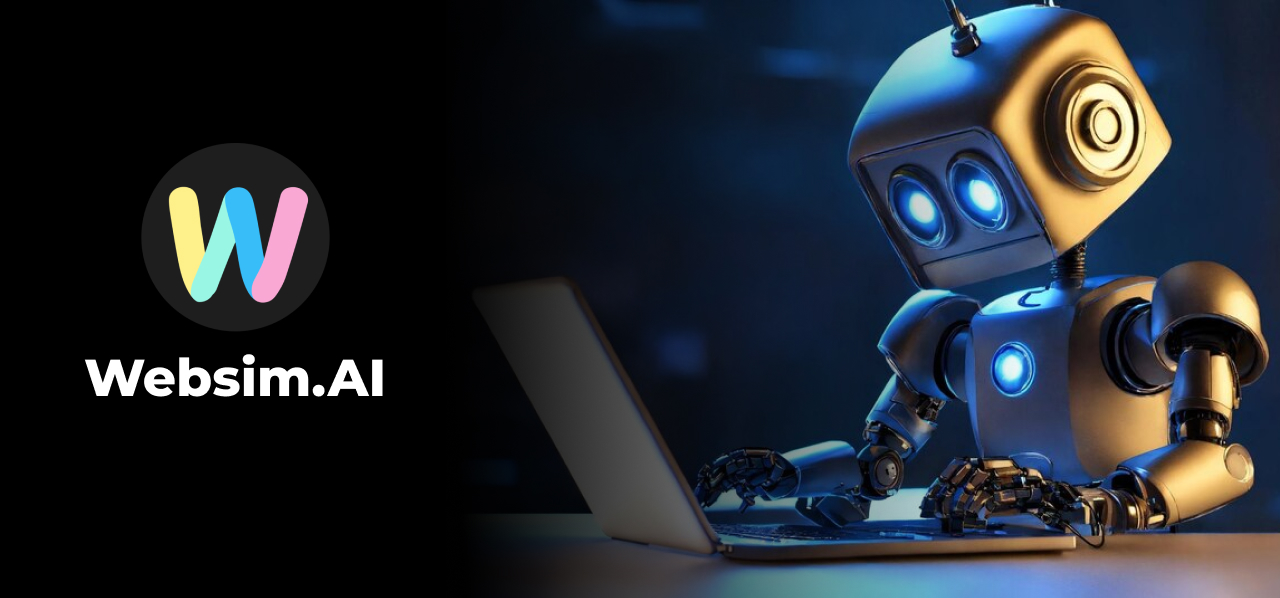The Evolution of WebSim AI
The internet is evolving. Gone are the days when building a website required extensive coding knowledge or the use of static, template-based design tools. With the rise of AI-driven solutions, web development is shifting towards dynamic, interactive experiences that adapt and respond to user input. WebSim.AI is at the forefront of this transformation, offering an innovative way to generate fully functional, interactive web environments using simple prompts.
WebSim.AI’s origins trace back to a one-day hackathon project inspired by the WorldSim concept. Though details about its initial development are sparse, the platform has rapidly gained traction for its ability to generate dynamic web applications in real-time. Unlike traditional web design tools, WebSim.AI leverages advanced AI models such as Claude Sonnet 3.5 and OpenAI’s GPT-4o to interpret user prompts and create interactive online experiences.
Breaking the Mold: Key Features of WebSim.AI
What sets WebSim.AI apart from conventional web development tools? The platform boasts several cutting-edge capabilities that streamline website creation and push the boundaries of online interactivity.
1. AI-Driven Content Generation
With WebSim.AI, users can generate an entire website including text, images, and layouts—simply by entering a prompt or URL.
- How it works: The AI analyzes the input and constructs relevant content, optimizing structure and design.
- Why it matters: This drastically reduces the time and effort required to build a website, making rapid prototyping and ideation more accessible.
- Use case: Imagine inputting “Create a website for a futuristic flower shop.” WebSim.AI would instantly generate a visually compelling site with relevant copy, imagery, and layout.
2. Interactive Web Simulations
Beyond static websites, WebSim.AI enables the creation of immersive, explorable environments.
- How it works: The AI interprets user prompts to generate 3D or interactive spaces where visitors can navigate and interact with elements.
- Why it matters: This opens the door to more engaging digital experiences, whether for education, entertainment, or e-commerce.
- Use case: A user might request a “Virtual museum of Pixel Art,” resulting in a space where visitors can walk through exhibits and interact with digital artifacts.
3. Customizable Web Elements
While AI handles the heavy lifting, users retain control over the details.
- How it works: Generated sites can be edited by adjusting text, colors, layouts, and interactive components.
- Why it matters: This fusion of AI efficiency and human creativity allows for highly personalized digital experiences.
- Use case: After generating an e-commerce site, a user can fine-tune product descriptions, rearrange navigation menus, and apply brand-specific colors.
4. Multiverse Search Functionality
WebSim.AI doesn’t just create; it adapts.
- How it works: Within an interactive simulation, users can search for topics, generating new, relevant content on the fly.
- Why it matters: This dynamic, evolving experience ensures that content remains fresh and engaging.
- Use case: In a virtual bookstore, searching for “science fiction” could generate an entire new section filled with AI-created book covers and descriptions.
How to Get Started with WebSim.AI?
Using WebSim.AI is refreshingly simple.
- Register for free .
- Choose your AI model (Claude Sonnet 3.5 is recommended, with GPT-4o available for experimentation).
- Enter a prompt or URL to generate a simulation.
- Explore and refine the generated site, using interactive editing tools to perfect the design.
- Save, share, or publish your project within the WebSim.AI community.
Real-World Applications
The potential applications of WebSim.AI are as diverse as the internet itself. Here are just a few ways it is being used:
- E-commerce: Interactive, AI-powered storefronts with dynamic product displays.
- Education: Adaptive learning platforms that provide real-time, interactive courses.
- Entertainment: Immersive storytelling environments and game prototypes.
- Healthcare: Patient education tools and virtual training simulations.
- Real Estate: Virtual property tours with interactive exploration.
- Tourism: AI-generated travel experiences that simulate real-world locations.
- Art & Culture: Virtual galleries and heritage site simulations.
The Future of WebSim AI
WebSim.AI represents more than just a new tool; it is a paradigm shift in web development. As AI-driven platforms continue to evolve, they will:
- Democratize web creation: Making it accessible to anyone, regardless of coding skills.
- Redefine web design: Shifting from static pages to interactive, AI-generated environments.
- Accelerate innovation: Enabling rapid prototyping and agile iteration.
- Integrate emerging tech: Acting as a bridge to AR, VR, and AI-assisted interfaces.
WebSim AI is more than just a website builder it is a glimpse into the future of the internet. By combining the power of AI with interactive simulations, it offers an unparalleled level of creativity, accessibility, and engagement.
Whether you are a developer, designer, educator, or just someone with an idea, WebSim AI provides an exciting, intuitive way to bring your vision to life. As the platform grows and evolves, the only limit is imagination.

